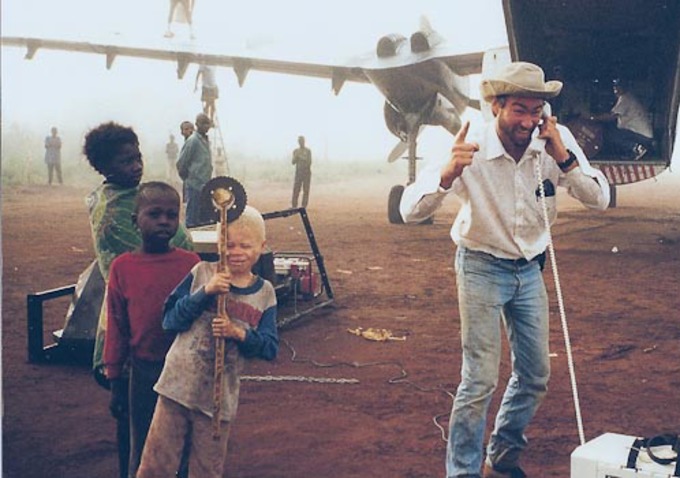
Lara Zizic received her master’s degree in filmmaking at Columbia University. She directed the short film The Isabel Fish (06) and co-directed the
feature Mission Congo (13).
Mission Congo
plays as part of the TIFF Docs program.
Women and Hollywood: Please give us your description of your film playing at TIFF.
Lara Zizic: Death, diamonds and greed. A charismatic US businessman pursues an irresistible opportunity during one of the worst humanitarian crises of
modern times.
Televangelist, multi-millionaire, and leader of the religious right, Pat Robertson is a man on a mission. During an escalating refugee crisis in the
Democratic Republic of Congo, Robertson ran a media blitz on his television station, the Christian Broadcasting Network, to raise money for his charity,
Operation Blessing International. Over the airwaves, he gave glowing reports of the charity’s relief efforts in Congo, raising millions of dollars in
donations. Absent from these reports is his simultaneous involvement in a very different mission: diamond mining. Friendly with a brutal dictator and in
business with a pastor, Robertson searched for gems deep in the jungle, diverting planes away from the refugee camps to transport mining equipment to a
remote part of Congo.
WaH: What drew you to this script? If you are the writer too, why did you write this script?
LZ: We were researching a feature script and came across an article by Bill Sizemore in The Virginian-Pilot, detailing how Pat Robertson, on his 700 Club TV show, raised money for the Rwandan refugee crisis in the Democratic Republic of Congo (DRC). On the show, he claimed that his charity,
Operation Blessing was using its cargo planes to aid refugees, while much of the time, the planes were used to haul mining equipment to a diamond mining
concession in a completely different part of DRC for Robertson’s for-profit company, the African Development Company.
We immediately wondered how it could be possible that we had never heard of this before. Pat Robertson was an early leader of the religious right in the US
and an ex-presidential candidate. We decided to contact the pilots who carried mining equipment for Robertson, and sat down to interview the chief pilot,
Bob Hinkle, a week later.
The details of his story were mind-boggling and somehow reminiscent of Conrad’s The Heart of Darkness. This interview led us to contact the miners
involved in Robertson’s mining operation and their stories convinced us that this was a documentary that needed to be made.
WaH: What was the biggest challenge?
LZ: One of the challenges was that part of the film took place nearly twenty years ago. The key players live all over the world and many have changed
countries several times since then, so tracking them down was painstaking. The other logistical difficulty was filming in Congo. Between the ongoing
fighting in the North, where the refugee crisis took place, and the total lack of infrastructure in the South, where Robertson’s mining concessions were
based, traveling and filming was not easy to say the least.
WaH: What advice do you have for other female directors?
LZ: Follow your gut. It sounds simple but can be difficult when faced with many dominant voices around you.
WaH: What’s the biggest misconception about you and your work?
LZ: As it is my first feature documentary, I am not sure there are that many misconceptions — or conceptions for that matter — good or bad.
WaH: What are the biggest challenges and or opportunities for the future with the changing distribution mechanisms for films?
LZ: I think there have always been challenges, but with the variety of online mechanisms and social media for attracting secondary audiences to a film I
also think there are many opportunities with the changing distribution mechanisms.
WaH: Name your favorite female directed film and why.
LZ: I loved Monsoon Wedding – -directed by Mira Nair and written by Sabrina Dhawan, for its humanity and combination of comedy and tragedy. I also
love Lynn Ramsay’s films — Ratcatcher and Morvern Callar, as well as Red Road by Andrea Arnold.






